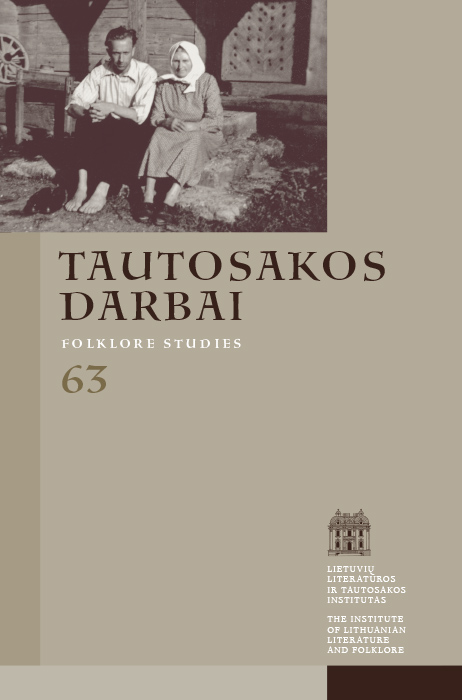Tatars by the Vokė River: Historical Memory and Personal Experiences
Abstract
In the historical narrative of Lithuania, the Vokė River is inseparable from the settling of Tatars in the territory of the Grand Duchy of Lithuania in the end of the 14th century, under the rule of Vytautas the Great. Until the present day, members of this Muslim ethnic community continue to live in villages and towns scattered along the banks of the river. According to their life stories, identity narratives and dreams analyzed in this article, the Tatars primarily perceive the landscape by the Vokė River through their community life, and in terms of their personal and family life evolving in this space. People reflecting on the historical narrative emphasize the importance of their voluntary decision to be there, contradicting popular historiographic theories of their ancestors having been moved there as prisoners of war or under the orders of the Lithuanian rulers. A string of villages situated along the Vokė River from its source to the mouth near the town of Grigiškės, have names that sound Turkic or Slavic; elderly local Tatars call them akolicas and point out to their peculiar layout, recognizing Tatar features even in the faces of the local inhabitants of other nationalities. The locals call their main settlement and the center of the Muslim community, the village of Keturiasdešimt Totorių (‘Forty Tatars’) in the Old Russian – Sorok Tatary. This place name was known as early as the 16th century, testifying to the deep entrenchment of the Tatar inhabitants in the culture of Lithuania, in which the Old Russian language was used for official writings and spoken by the nobility. From the 17th century, the Polish language took over, becoming both written and spoken language, adopted by the noble Tatars as well. Currently, local Tatars mostly use the local Belorussian dialect or Polish and Russian languages; this sets them apart from their fellow-countrymen living in the Kaunas Region who have started speaking Lithuanian during the interwar period. The author of the article regards Slavic languages as part of the cultural identity of the Vilnius Region and as an important mark of the ethnic Tatar culture related to their regional and noble identity, and to their attempts at fostering the Tatar families by means of frequently seeking spouses from the Tatar settlements in Belarus or Poland.
Downloads
Most read articles by the same author(s)
- Rūta Žarskienė, Inga Vidugirytė, Asta Skujytė-Razmienė, Gražina Kadžytė, Lina Leparskienė, Vita Džekčioriūtė-Medeišienė, Dalia Zaikauskienė, Chronicle , Tautosakos darbai: Vol. 58 (2019)
- Guntis Pakalnas, Rimantas Sliužinskas, Asta Skujytė-Razmienė, Radvilė Racėnaitė, Vita Ivanauskaitė-Šeibutienė, Rūta Žarskienė, Lina Leparskienė, Andželika Jakubynienė, Chronicle , Tautosakos darbai: Vol. 47 (2014)
- Lina Leparskienė, “Looking at the World, I Spot Small Details”: the Researcher‘s View on Folklore, Mythology, and Local Culture. A conversation with the National Jonas Basanavičius Prize Winner for 2023 Daiva Vaitkevičienė , Tautosakos darbai: Vol. 67 (2024): Tautosakos darbai
- Lina Leparskienė, The Karaim Space of Trakai in the Local Lore and the Legend of the Miraculous Horse of the Duke Vytautas , Tautosakos darbai: Vol. 56 (2018)
